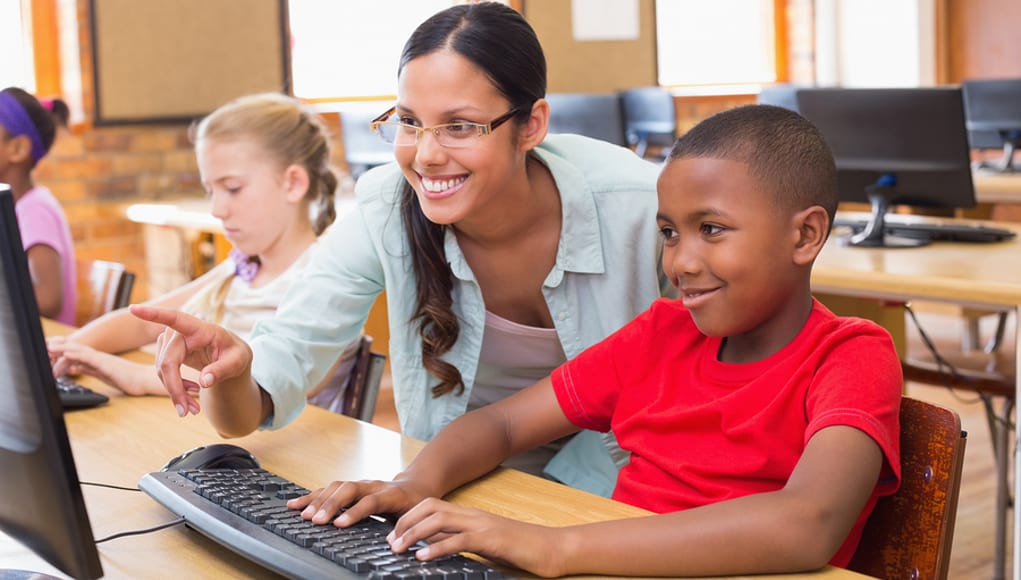What Policies and Practices Can Make Learning Personal for All?

Download the full report by Barbara Pape and Tom Vander Ark
 An educator in the 1970s or 1980s with a classroom of 24 students might have had five or six students (20 to 34 percent) requiring specialized interventions. In a classroom of 24 students today, it is common that between 10 and 12 students (40 to 50 percent) are living in poverty, have a disability or learning difference, are English language learners, are gifted or talented, are experiencing challenges at home or in their communities that result in trauma, or some combination of the above—each of whom research shows needs personalized approaches to learning to reach their potential.
An educator in the 1970s or 1980s with a classroom of 24 students might have had five or six students (20 to 34 percent) requiring specialized interventions. In a classroom of 24 students today, it is common that between 10 and 12 students (40 to 50 percent) are living in poverty, have a disability or learning difference, are English language learners, are gifted or talented, are experiencing challenges at home or in their communities that result in trauma, or some combination of the above—each of whom research shows needs personalized approaches to learning to reach their potential.
Variabilities among learners in terms of pace, background knowledge, ability to focus in a school setting, homelife conditions, socio-economic status, and more range widely across our contemporary cohort of American students. These are the learners who struggle to learn in restrictive, traditional classroom environments. Inspired by Todd Rose (End of Average), the following diagram shows a few of the ways apparently similar students differ as learners.

Demands from the job market also are changing. We are no longer, and have not been for some time, an industrial society in need of human cogs on an assembly line. According to the World Economic Forum, the top five most valued skills for workers in 2020 will be: 1) complex problem solving; 2) critical thinking; 3) creativity; 4) people management; and 5) coordinating with others.
As we advance our understanding of learners, learning technology available today makes reaching all students much more feasible. But it does not make it easy.
To look at options and structures for moving forward, I recently worked with Barbara Pape of Digital Promise to gather and analyze the top strategies being advocated for by today’s most prominent voices in personalization. The result is a report issued today, Policies and Practices That Meet Learners Where They Are.
What is Personalization
Personalized learning is not an isolation chamber of students in cubicles behind computers. While technology is a powerful tool for teachers to use to personalize learning, the culture of personalization is built on embracing all comers and providing paths for success for each student. It rests on emerging principles of social, emotional, and academic learning. It is not hung up on seat time, but on a love of learning and continuously improving performance.
In “A Personalized Approach to Equity,” an article in the March 2017 ASCD magazine, Becky Wilusz and Ken Templeton at Great Schools Partnership report on five elements of personalized learning that can lead to more equitable outcomes for students:
- Learning focuses on common standards that apply to all students
- Students have regular opportunities to engage in higher-order thinking and transfer their learning
- Feedback and reflection are routinely incorporated into learning experiences
- A system of varied supports and extensions exist to help all students succeed
- Students have choice in designing the content, pathways, and products of learning
Moving Forward
While federal and state policies are door-openers, school districts’ abilities to transform toward personalized approaches should not be underestimated. In the report, we argue for a systemic approach including a shared vision, personalized learning plans, and access to technology/. We recommended leveraging networks, working in phases, and supporting teachers (see Getting Smart’s series on pilot design for districts looking to personalize learning).
Leading advocates of student-centered learning like iNACOL see ESSA as “a historic opportunity for the United States to begin to transform K-12 education toward personalized, student-centered learning.”
KnowledgeWorks reviewed state ESSA plans and found a general shift toward personalized learning. They have categorized state plans that pave the way for personalization into these categories:

The report also notes technical issues like data interoperability that would make it easier for teachers to deliver personalized learning (check out Project Unicorn).
Learner Positioning System
Digital Promise Global developed a Learner Positioning Systems (LPS) to address these challenge by linking research to practice to enhance opportunities for personalization.

LPS facilitates the connection among researchers, EdTech developers, and teachers. The map makes clear that each learner is unique and that a broad view of personalization is key to student success It also underscores the importance of tapping into learning science and connecting learning scientists with education product developers, teachers and administrators.
Download the Report
For more, see:
- Skills of the Future: How to Thrive in the Complex New World
- League of Innovative Schools: A Network Creating the Future of Learning
- How and Where EdTech Will Help
Stay in-the-know with all things EdTech and innovations in learning by signing up to receive the weekly Smart Update. This post includes mentions of a Getting Smart partner. For a full list of partners, affiliate organizations and all other disclosures, please see our Partner page.






0 Comments
Leave a Comment
Your email address will not be published. All fields are required.